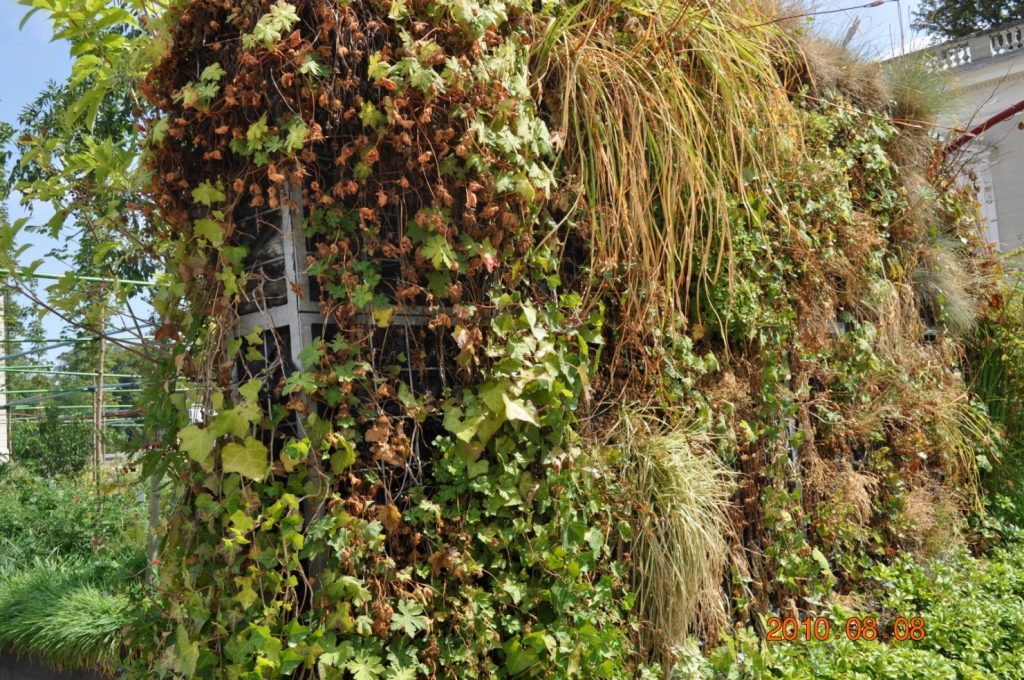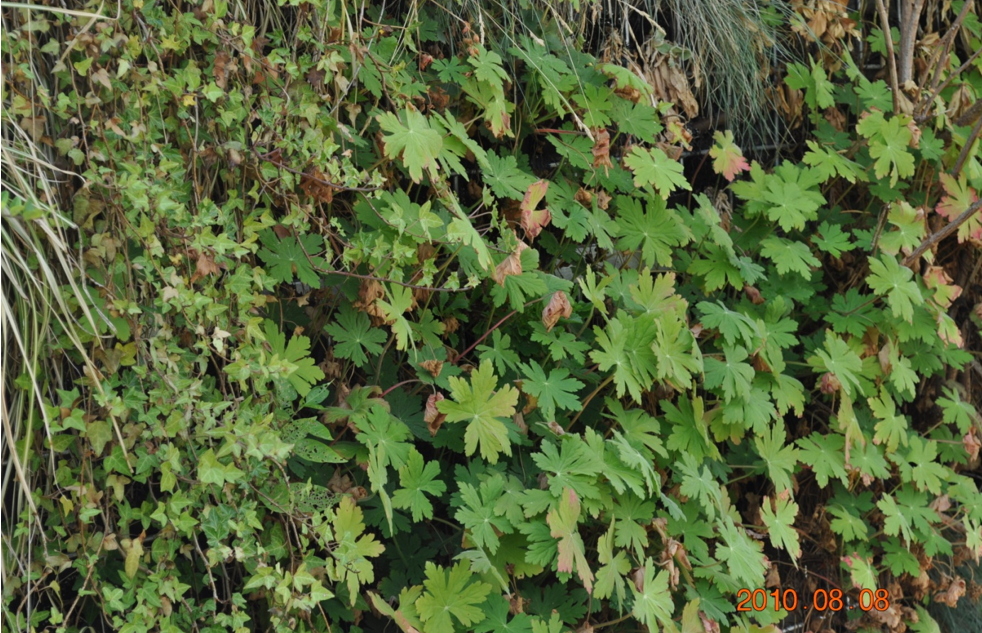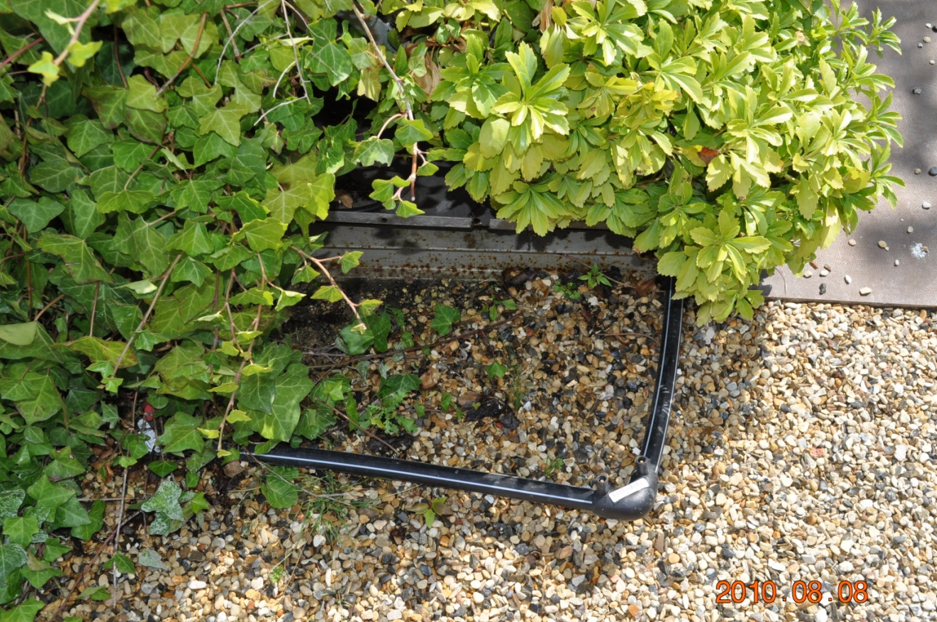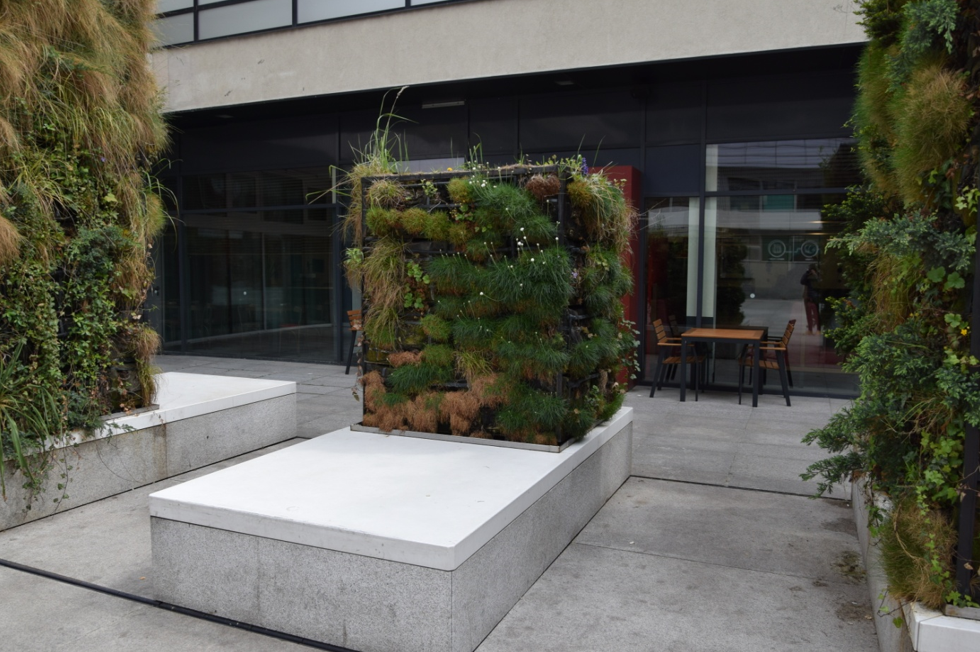“Green gabion walls” are simple structures made of gabions (wire baskets) made of galvanized metal mesh and filled not with crushed rock or stone but with soil substrate in which plants grow.
Gabion walls can be free-standing structures but can also be installed along vertical surfaces. They require a foundation on poured concrete plinths and foundations.
Greening a gabion:
1) Line the gabion, made of galvanised mesh, with geotextile to protect the soil substrate from spilling out.
2) Fill the gabion with soil substrate.
3) Between the meshes of the mesh, make small cuts in the geotextile, into these cuts plant seedlings of greening “vertical garden” plants.
Application:
Against the walls of buildings, after protecting them from moisture. As free-standing elements – screens, fences.
Disadvantages:
The construction is cheap to implement but takes up a lot of space and is very heavy.
Technical drawing of a gabion.
Examples of solutions:
- Paris – Bagattele park
-

Fig. 4 “Free standing gabion wall in Bagattele park in Paris.” Author: Agnieszka Dudzińska – Jarmolińska -



A simple free-standing gabion wall in Bagattele park in Paris. Automatic watering.
London Paradise Park Children’s Center

The project was a collaboration between the architecture studio DSDHA and landscape architect Marie Clark. Ground cover plants, climbing plants and shrubs were used to green the wall. The wall is greened by 70,000 plants – irrigation is provided by rainwater collected in containers on the roof of the building.
Due to poor maintenance, the vertical garden pictured here no longer exists.
- Zodiak Pavilion in Warsaw.


